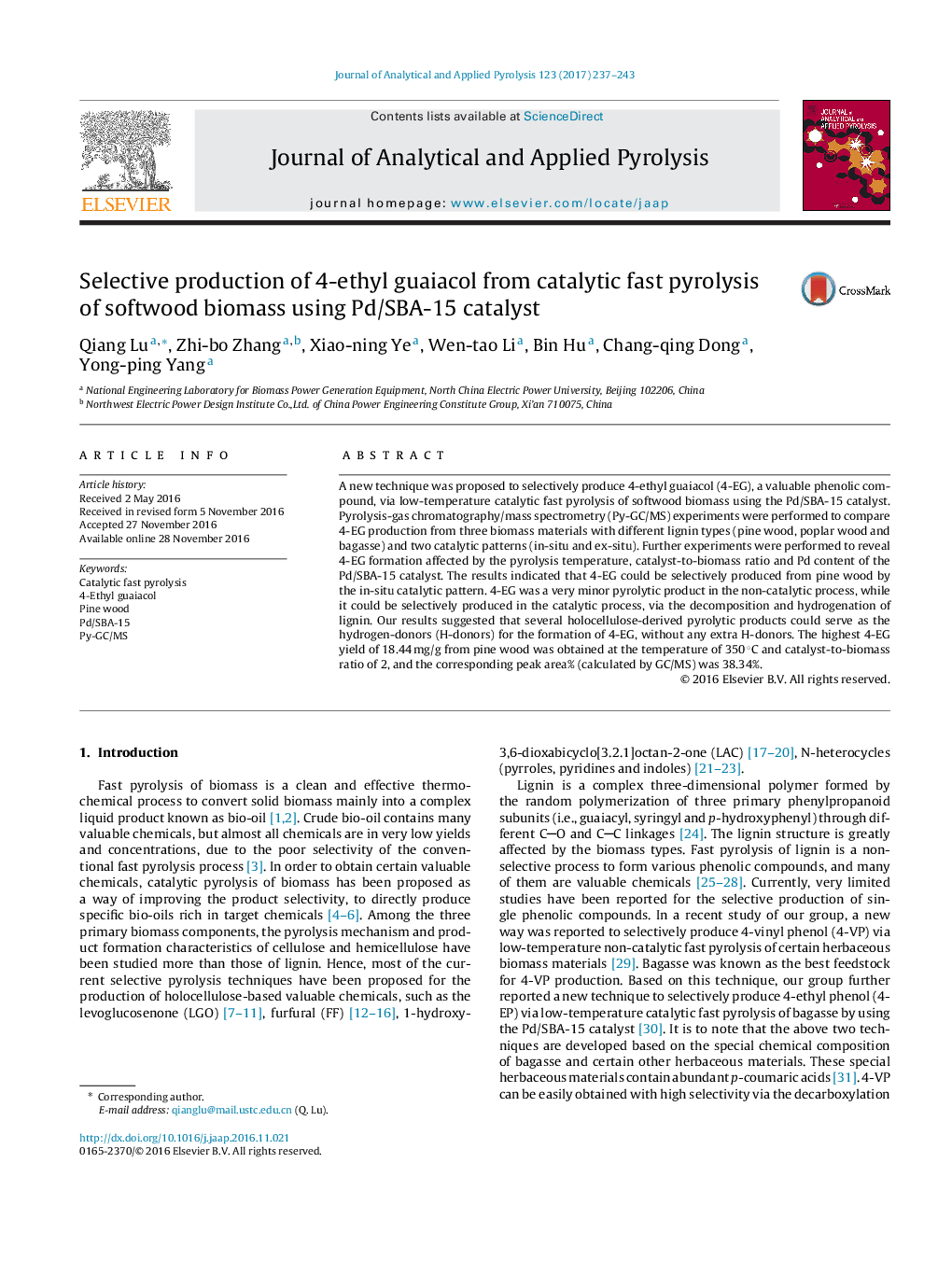| Article ID | Journal | Published Year | Pages | File Type |
|---|---|---|---|---|
| 5134543 | Journal of Analytical and Applied Pyrolysis | 2017 | 7 Pages |
â¢4-Ethyl guaiacol was selectively produced from catalytic fast pyrolysis of softwood biomass using Pd/SBA-15 catalyst.â¢In-situ catalytic pattern performed much better than ex-situ pattern on 4-ethyl guaiacol production.â¢Certain holocellulose-derived compounds might act as hydrogen-donors for the formation of 4-ethyl guaiacol.â¢The maximal 4-ethyl guaiacol yield reached 18.44 mg/g.
A new technique was proposed to selectively produce 4-ethyl guaiacol (4-EG), a valuable phenolic compound, via low-temperature catalytic fast pyrolysis of softwood biomass using the Pd/SBA-15 catalyst. Pyrolysis-gas chromatography/mass spectrometry (Py-GC/MS) experiments were performed to compare 4-EG production from three biomass materials with different lignin types (pine wood, poplar wood and bagasse) and two catalytic patterns (in-situ and ex-situ). Further experiments were performed to reveal 4-EG formation affected by the pyrolysis temperature, catalyst-to-biomass ratio and Pd content of the Pd/SBA-15 catalyst. The results indicated that 4-EG could be selectively produced from pine wood by the in-situ catalytic pattern. 4-EG was a very minor pyrolytic product in the non-catalytic process, while it could be selectively produced in the catalytic process, via the decomposition and hydrogenation of lignin. Our results suggested that several holocellulose-derived pyrolytic products could serve as the hydrogen-donors (H-donors) for the formation of 4-EG, without any extra H-donors. The highest 4-EG yield of 18.44 mg/g from pine wood was obtained at the temperature of 350 °C and catalyst-to-biomass ratio of 2, and the corresponding peak area% (calculated by GC/MS) was 38.34%.
